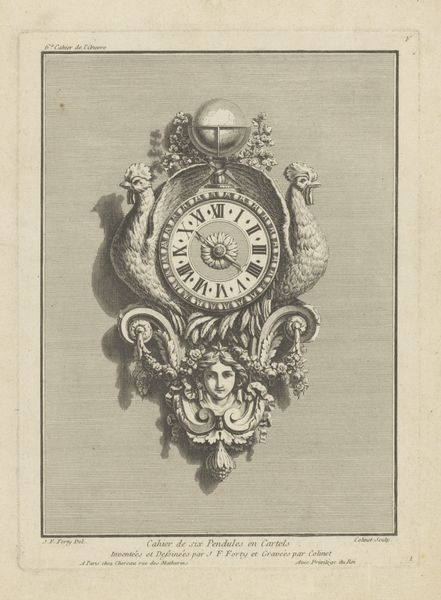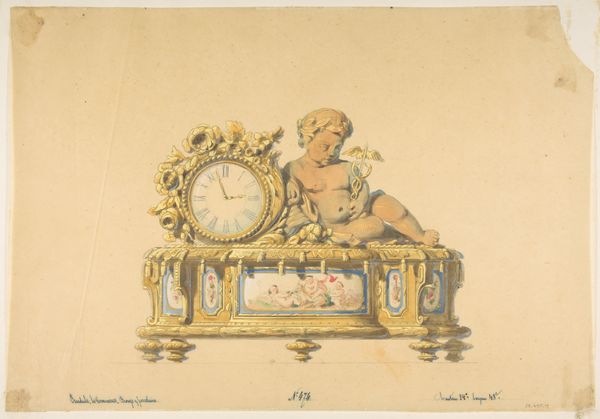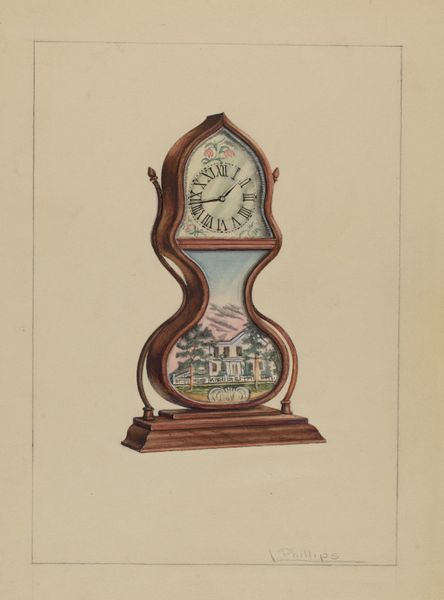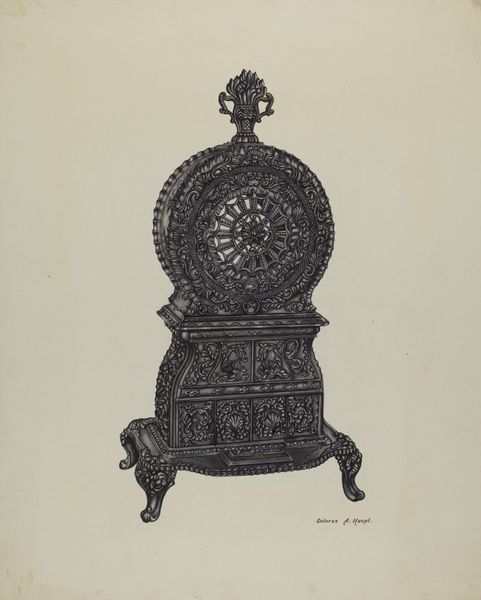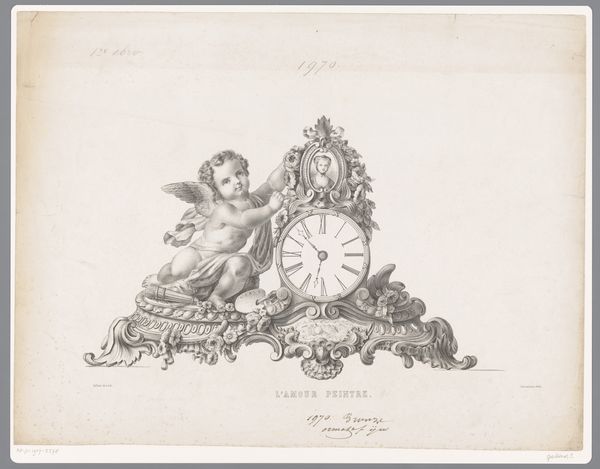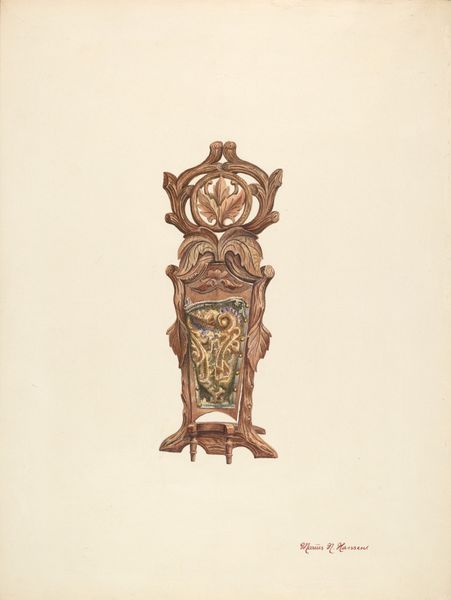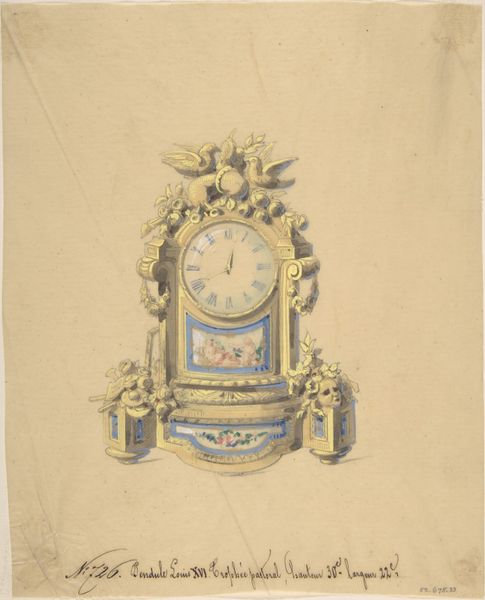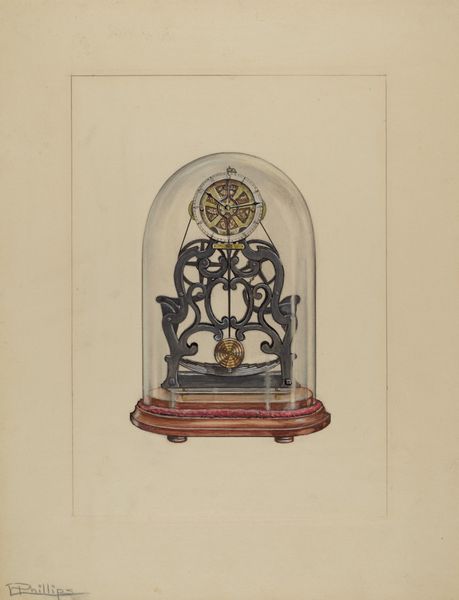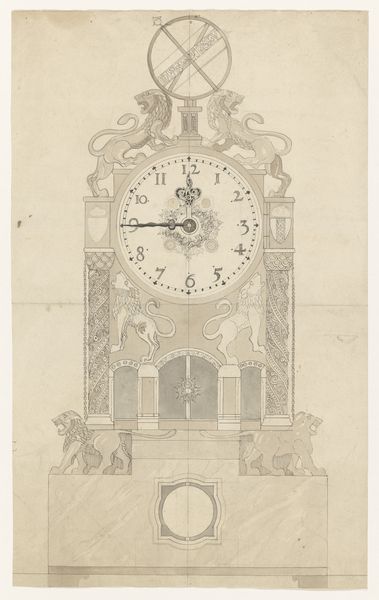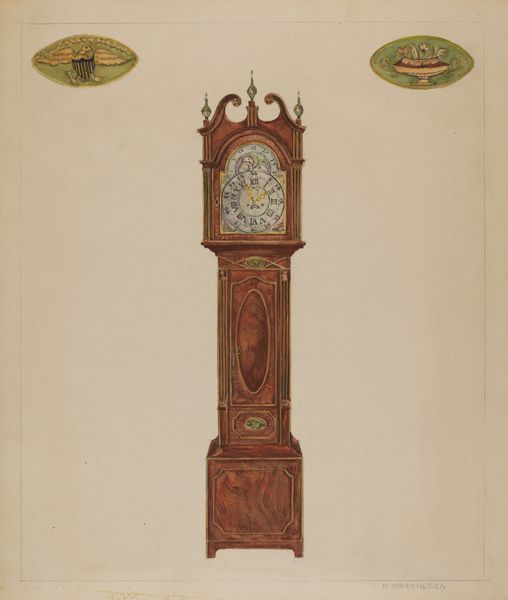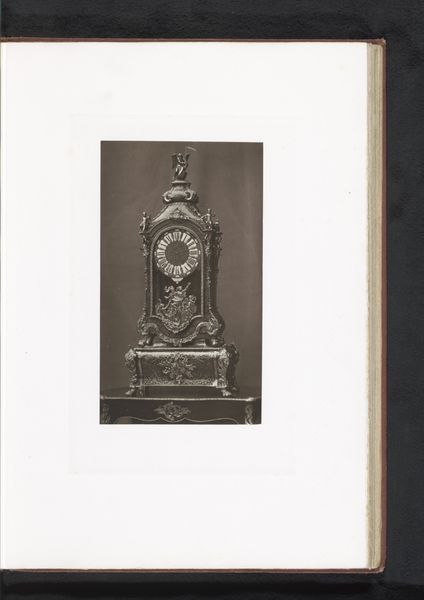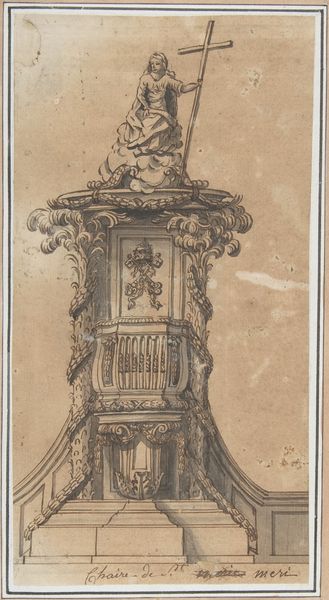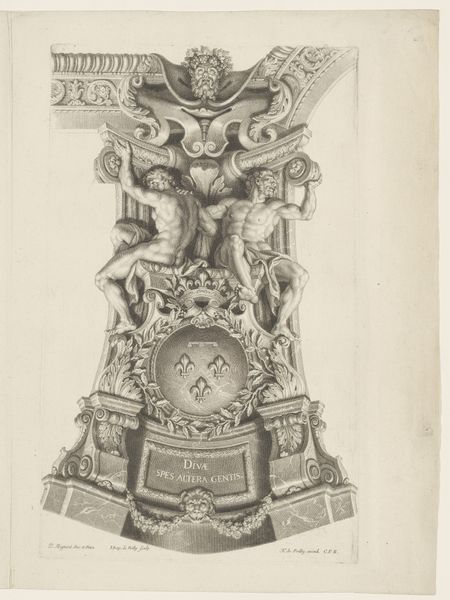
drawing, coloured-pencil
#
drawing
#
coloured-pencil
#
pencil drawing
#
coloured pencil
Dimensions: overall: 30.5 x 22.8 cm (12 x 9 in.) Original IAD Object: About 16"long and 13 1/2"high
Copyright: National Gallery of Art: CC0 1.0
Curator: Ah, I see it now, a rather curious depiction of the Ansonia Clock from around 1936. The artist, Edith Magnette, captured it using coloured pencils. What do you make of it? Editor: The muted palette and the subject's pensive pose gives it a melancholic feel, almost as if the clock itself is contemplating the passage of time. The scale feels domestic, somehow. Curator: Well, clocks, especially mantelpieces like these, had an interesting role to play in early 20th-century domestic life. Ansonia was a major manufacturer, making timepieces accessible across social classes. To see it rendered in colored pencil speaks to artistic accessibility, too. A less rarefied medium, compared to oils. Editor: Absolutely, and colored pencil drawings were a popular method for designers to record and present their ideas, perhaps as part of some manufacturing blueprint. What's fascinating is that the choice of rendering gives a sense of how ubiquitous these designs were. Magnette’s material choices seem fitting, since her artistic intervention highlights the clock as both functional object and aspirational artwork. Curator: Right, and how it would have circulated, appearing in catalogs, advertisements… a fascinating network of dissemination! The image presents more than a rendering, it documents a moment in commodity culture when affordable ornamentation came within reach of more households. It would be interesting to see if the design matched something produced, or was instead a purely theoretical construct, Editor: It also touches upon the relationship between industrial design and the decorative arts. The classical figure alongside the clock's ornamentation seem to represent a confluence of functionality and aesthetic aspirations in a mass-produced object. Was this particular clock type aimed at a bourgeois audience keen to signal its culture capital? Curator: A pertinent question. It raises interesting aspects around taste and cultural capital among middle-class families. It’s not merely telling time; it's making a statement. I wonder, what impact did these new industrial techniques and artistic collaborations have on society? It must have revolutionized everyday life, to a large degree, both through commerce and aspiration. Editor: Exactly, a change of time indeed! Curator: Nicely put. Thanks for joining me today. Editor: Likewise, it's been a thought-provoking conversation.
Comments
No comments
Be the first to comment and join the conversation on the ultimate creative platform.
